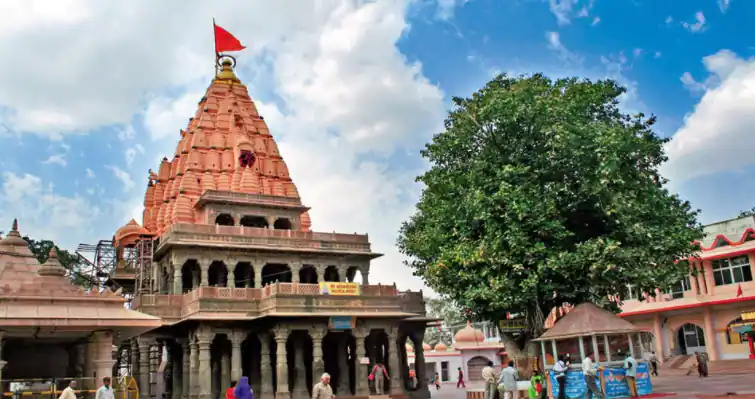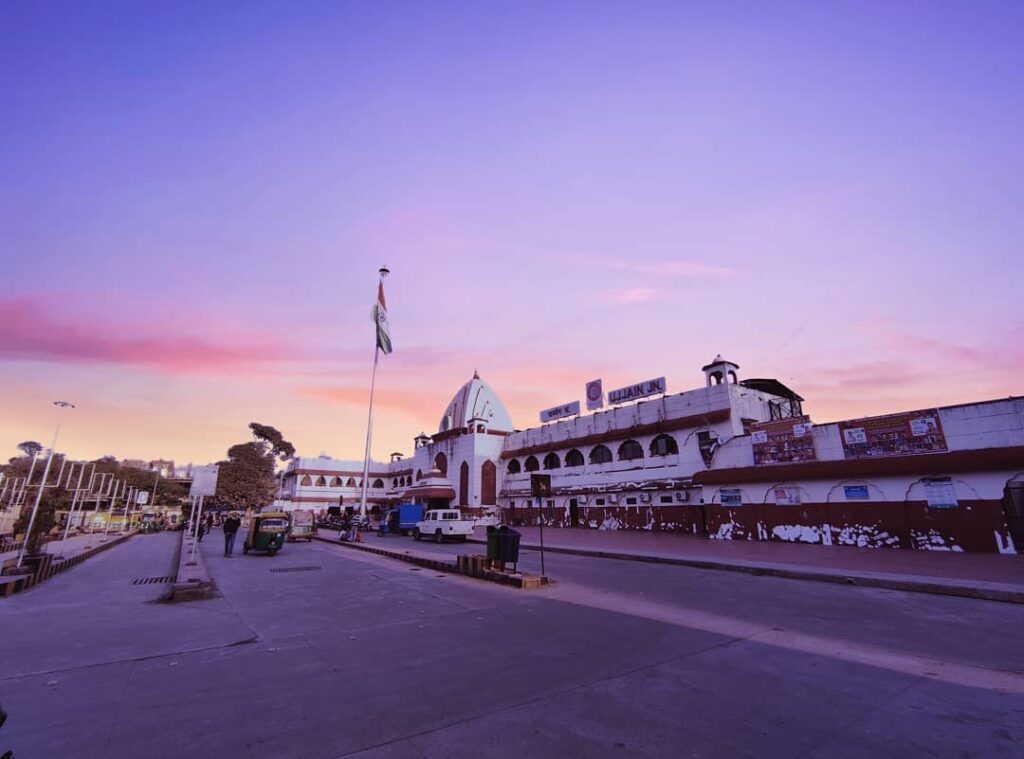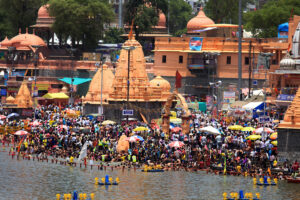Ujjain – One of the Seven Holy Cities
Ujjain, a city steeped in spirituality and ancient traditions, holds a significant place in Hinduism. It is one of the seven holy cities known as Sapta Puri, which are believed to grant salvation (moksha) to devotees. Situated on the banks of the holy Shipra River in Madhya Pradesh, Ujjain is home to the revered Mahakaleshwar Jyotirlinga and numerous other ancient temples. Pilgrims from across India and the world visit this divine city to seek blessings and immerse themselves in its sacred energy.
Ujjain – One of the Seven Holy Cities of Hinduism

The Religious Significance of Ujjain
The “Sapta Puri” are the seven holy cities in Hinduism, known for their religious and spiritual significance. Here is a famous shloka that mentions these seven sacred cities:
अयोध्या मथुरा माया काशी काञ्ची अवन्तिका।
पूरी द्वारावती चैव सप्तैते मोक्षदायिकाः॥
“Ayodhya, Mathura, Maya (Haridwar), Kashi (Varanasi), Kanchi (Kanchipuram), Avantika (Ujjain), and Puri (Dwarka) are the seven cities that grant liberation.”
Ujjain is one of the seven holy cities known as Sapta Puri, which are believed to grant salvation (moksha) to devotees. Ujjain has been a center of spirituality, astrology, and devotion for centuries. It is closely associated with Lord Shiva, as the Mahakaleshwar Temple houses one of the twelve Jyotirlingas, which are the most sacred shrines of Shiva. The city is also linked to Lord Krishna’s early life, as he and his brother Balarama received their education here under Guru Sandipani.
One of the most important aspects of Ujjain’s religious significance is the Kumbh Mela, which takes place once every twelve years. This grand spiritual gathering attracts millions of devotees, saints, and scholars who take a holy dip in the Shipra River, believing it cleanses sins and paves the way to salvation.

Famous Temples and Sacred Places in Ujjain
1. Mahakaleshwar Temple
The Mahakaleshwar Temple is the most important religious site in Ujjain. Dedicated to Lord Shiva, it is famous for its Bhasma Aarti, a unique ritual where sacred ash is offered to the deity at dawn. Devotees believe that seeking blessings from Mahakal ensures protection from negative energies and grants peace in life.
2. Kal Bhairav Temple
This temple is dedicated to Kal Bhairav, a fierce form of Lord Shiva. One of its unique aspects is the offering of liquor to the deity, which is an age-old tradition. Many devotees visit this temple to seek protection and strength.
3. Harsiddhi Temple
The Harsiddhi Temple is one of the 51 Shakti Peethas and holds great importance in Hinduism. It is believed that Goddess Sati’s elbow fell at this site. The temple is known for its grand deep stambh (tower of lamps) that creates a mesmerizing sight during evening prayers.
4. Chintaman Ganesh Temple
Dedicated to Lord Ganesha, this temple is one of the oldest in Ujjain. Devotees visit here to seek solutions to their problems, as “Chintaman” means “remover of worries.”
5. Ram Ghat and Shipra River
Ram Ghat, located on the banks of the Shipra River, is a prime location for spiritual activities in Ujjain. Devotees perform rituals, take holy dips, and participate in the Sandhya Aarti (evening prayer). This ghat becomes the focal point of the Kumbh Mela, where millions of pilgrims gather for the sacred bath.
Ujjain – A Hub of Astrology and Education
Since ancient times, Ujjain has been considered a center for astrology and astronomy. The city houses the Vedh Shala (observatory) built by Raja Jai Singh, which showcases ancient astronomical instruments. Even today, astrologers regard Ujjain as a prime location for accurate calculations of planetary positions and muhurat (auspicious timings).
Ujjain’s Festivals and Celebrations
Apart from the Kumbh Mela, Ujjain is known for its grand celebrations of Hindu festivals:
- Mahashivratri – The entire city lights up with devotion, and thousands of devotees visit the Mahakaleshwar Temple to seek blessings.
- Navratri – The Harsiddhi Temple witnesses special prayers and festivities during this time.
- Nag Panchami – The worship of snakes, closely associated with Lord Shiva, is an important tradition here.
Best Time to Visit Ujjain
The ideal time to visit Ujjain is between October and March when the weather remains pleasant. The winter months are perfect for temple visits and spiritual experiences without the discomfort of summer heat. If you wish to witness the Kumbh Mela, you should plan according to its schedule, which occurs once every twelve years.

Conclusion
Ujjain is not just a city; it is a gateway to spiritual awakening. With its ancient temples, sacred rituals, and deep-rooted traditions, it continues to be a guiding light for devotees seeking peace and divine blessings. Whether you come for a pilgrimage, astrology, or to experience the rich cultural heritage, Ujjain offers a divine experience that stays with you forever. This is one of the seven holy cities known as Sapta Puri, which are believed to grant salvation (moksha) to devotees.





